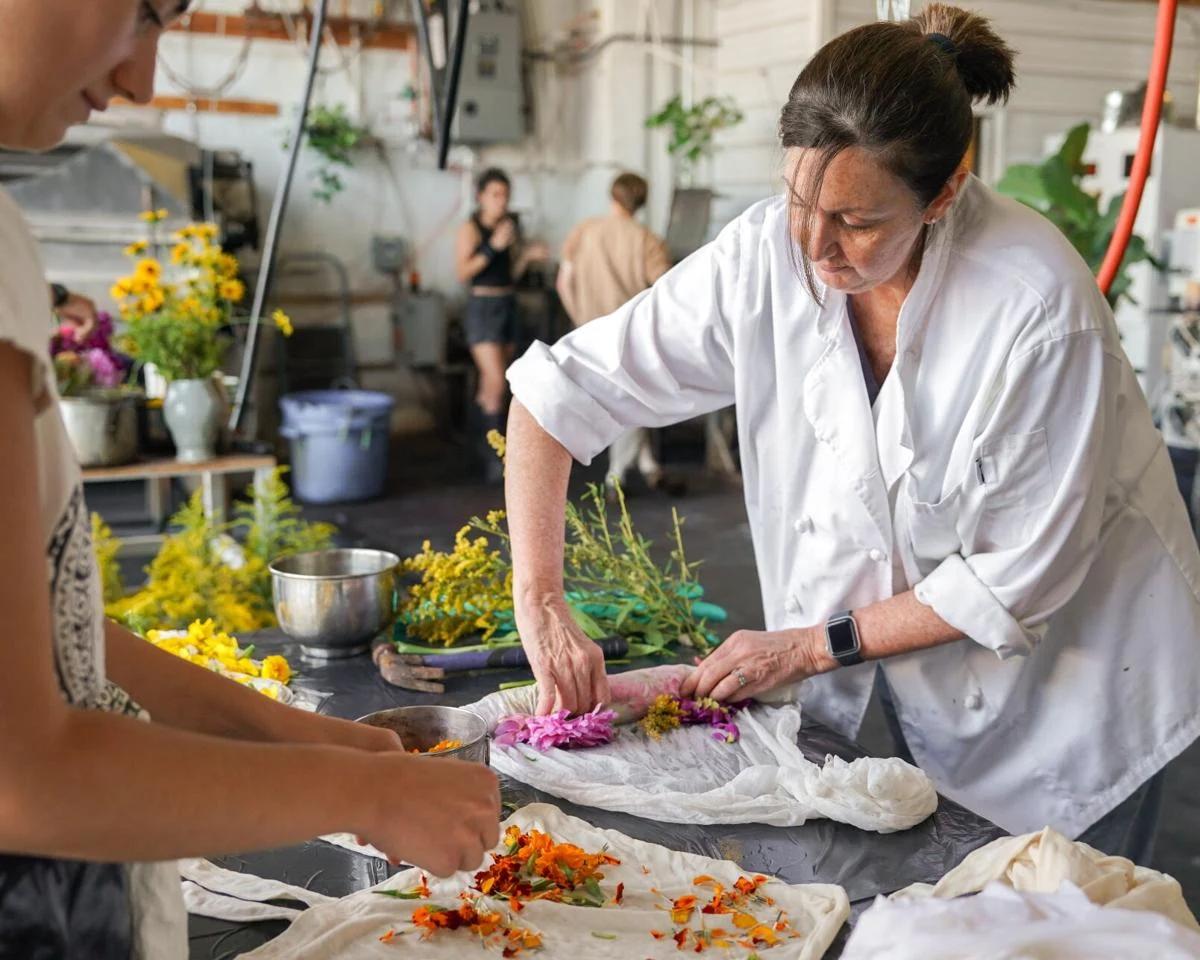This Lancaster County company will show you how to dye your clothes with flowers and avocado pits
10 October, 2022

In a former dairy barn outside of Gap, Winona Quigley hangs a rainbow of yarn bundles, each color rooted in plants. The palette expands in the dye house, where avocado pits turn T-shirts pink, flower petals tie-dye silk dresses and indigo powder gets everywhere. Everything here is one-of-a-kind, made for designers like Rachel Comey, brands like Stitch Fix and companies like Chipotle Mexican Grill.
Last month, Debby Phelps dipped some of her old T-shirts into steaming pots of dark blue indigo.
Rachel Lopez-Cerrato dyed yards of silk with logwood and marigold powders in hopes of making dresses.
Nick Rice darkened a pair of his handmade cotton/hemp farm pants with cutch and iron.
They’re part of something new for Green Matters Natural Dye Company. What started as a college thesis aimed to change a toxic industry has become a business that’s doubled revenue every year. Last year, Forbes named owner Quigley on its 30 Under 30 list. Now, she’s ready to add people like Phelps, Lopez-Cerrato and Rice to the growing list of commercial clients through workshops and other services. All of these are ways to make clothing more sustainable.
Finding commercial clients to dye with plant-based materials is one way to make change. Bringing natural dyes to the public is part of something bigger.
“We have to slow down the amount of things you’re making,” Quigley says during a break in a public dyeing workshop last month. “In order to do that, people need to hang on to their garments a lot longer and have more options for how to fix things.”
Workshops like this show how to give clothing a second life through dye, whether that covers stains or simply changing the color.
That’s one of the reasons Emma Compton came to Green Matters from Broomall, New Jersey. She brought some clothing she had set aside, like a tan midi dress.
“If I dye it, maybe I would wear it more,” she said.
Creating change
Before she dug into dyeing, Quigley grew up in Narvon and learned how to sew from her great-grandmother. While studying fashion designer at Parsons School of Design, Rana Plaza collapsed in Bangladesh, killing more than 1,100 garment workers. It was a turning point of awareness, personally and for the industry she wanted to join. Who is producing our clothing? What’s the environmental aftermath of making all of this fabric.
For her thesis collection, Quigley focused on regional fibers, finding wool and mohair in central Pennsylvania, dyeing it over a campfire in her mother’s back yard, finding spinners to make yarn and knitting the final pieces.
The focus on natural dyeing even after graduation was one way to create change in an often toxic industry.
“The textile industry and the fashion industry both need to make enormous changes in order to continue to make things without having such an enormous impact in the environment,” Quigley says. “The textile and fashion industries are the second largest polluter of global waterways.”
By 2015, Quigley started Green Matters with a business partner and now is the sole owner of the company. She still uses the college-era recipes today, but more often on cotton and now at a larger scale.
Source: lancasteronline.com
